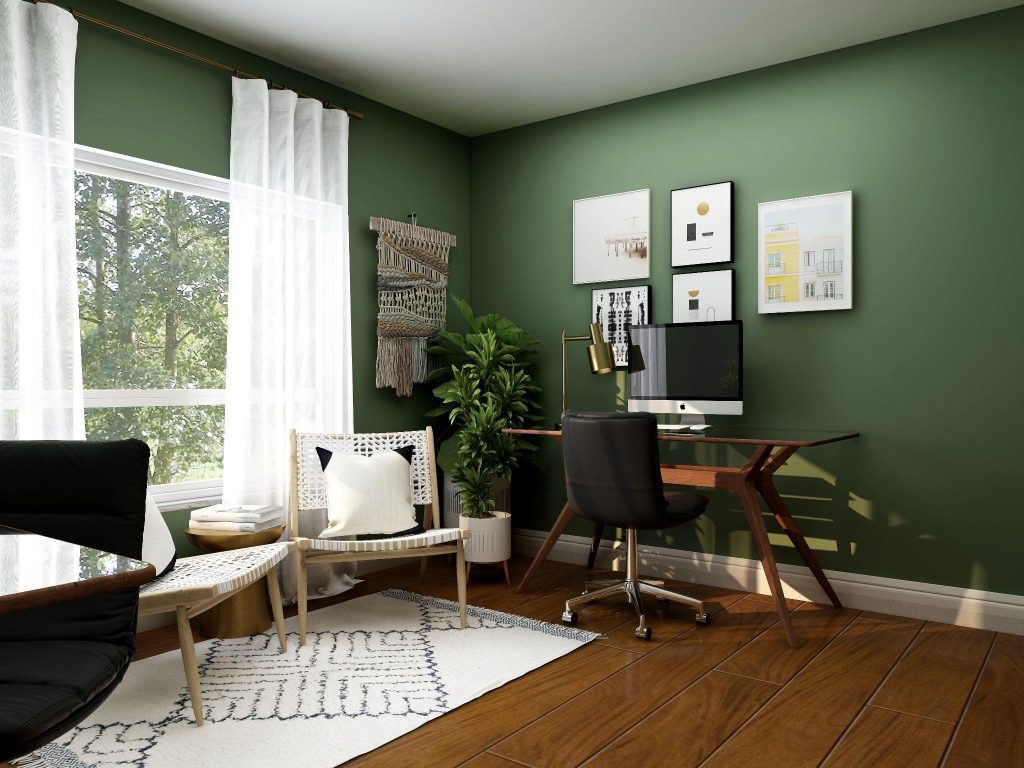In the era of remote work and entrepreneurial endeavours, a home office has become an essential space in many households. However, creating an area that is both functional and inspirational requires more than just setting up a desk and chair. Your workspace should boost your productivity, comfort, and peace of mind. Here are eight practical tips for designing and organizing your home office to foster efficiency and creativity.
Choose the Right Desk for Your Space
The foundation of your home office is your desk, and choosing the right one can significantly impact your productivity. An L-shaped office desk is an excellent option as it offers ample workspace and uses corners efficiently, leaving the rest of the room open for other essentials. This type of desk also provides flexibility for setting up your computer, important documents, and any other tools you need within arm’s reach, making multitasking more manageable.
Invest in a Comfortable and Ergonomic Chair
You’ll spend countless hours in your office chair, so comfort and support are paramount. Invest in an ergonomic chair that supports your back, promotes good posture, and suits your body type. Adjustable features for height, back angle, and armrests can help prevent strain and discomfort, allowing you to work for extended periods without compromising your health.
Optimize Lighting to Reduce Eye Strain
Proper lighting in your home office can reduce eye strain and create an inviting atmosphere. Utilize natural light by positioning your desk near windows, but be mindful of glare on your computer screen. Supplement with a mix of ambient, task, and accent lighting. Adjustable lamps can enhance illumination where you need them, especially during evening hours, ensuring optimal visibility.
Organize with Adequate Storage Solutions
An organized office boosts productivity and minimizes distractions. Utilize shelving units, filing cabinets, and desk organizers to store documents, office supplies, and technology. Keep frequently used items accessible, while less necessary things can be stored away. Labelling drawers and using decorative bins can combine functionality with aesthetic appeal, keeping your workspace tidy and inspiring.
Incorporate Personal and Inspirational Elements
Your home office should be a reflection of your style and carry elements that inspire you. Hang artwork, set up a small library of your favourite books, or include decorative items that spark joy and creativity. Plants can add a touch of nature, improve air quality, and enhance your mood. These personal touches make your office more enjoyable and motivating.
Manage Technology Efficiently
Technology is a vital component of any home office. However, it can also contribute to clutter. Organize your cables using clips or sleeves to prevent tangling. Invest in a good power strip or surge protector to accommodate all your devices. Consider wireless devices to reduce the need for cables, and set up a dedicated charging station for your gadgets. Efficient tech management leads to a safer and more organized workspace.
Create a Workflow System
Your office layout should complement your workflow. Position your equipment, supplies, and furniture based on how you work and move within your space. Keep essential items near your primary workspace and consider a mobile cart for resources you use in different areas. A bulletin board or whiteboard is excellent for tracking tasks and deadlines. This systematic approach streamlines your processes, saving time and energy.
Designate Zones for Different
Activities If your work involves varied tasks, consider setting up dedicated zones for each activity. A quiet nook with a comfortable chair can be a reading area, while a larger table can serve as a space for collaborative work or spreading out projects. A separate zone for breaks, equipped with a coffee maker and a snack station, can help you recharge. These designated areas can make your workday more dynamic and efficient.
Conclusion
Designing and organizing your home office is a personal journey, one that requires consideration of your unique working style, comfort, and professional needs. By selecting the right furniture like an L-shaped office desk, investing in ergonomic comfort, optimizing your lighting, and personalizing your space, you create an environment conducive to productivity and innovation. Remember, your home office is an evolving space. Don’t hesitate to reassess its design as your needs change. Whether you’re a remote employee, freelancer, or entrepreneur, your home office should be a space that motivates you to achieve your best work every day. With these eight tips, you’re well on your way to creating a functional, organized, and inspiring workspace.
